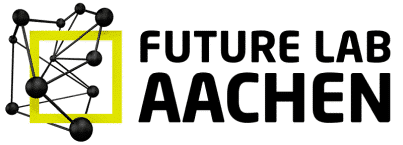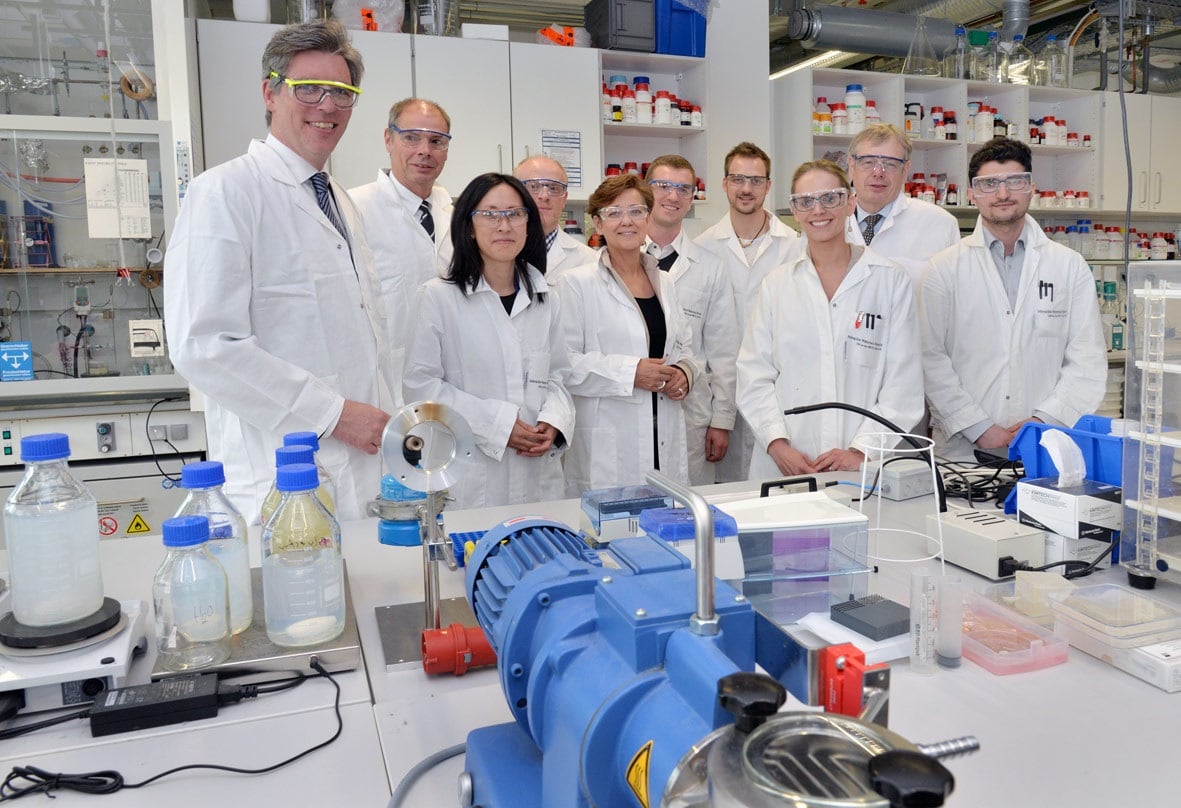Future Lab Aachen at the DWI – Leibniz Institute for Interactive Materials, where researchers are pursuing the idea of making science visible – and, to get things going, have invited Aachen’s Lord Mayor Marcel Philipp to visit them.
During the visit to the institute, Marcel Philipp, accompanied by civic deputees Susanne Schwier and Prof. Dr. Manfred Sicking, was treated to an insight into three of the material scientists’ current research projects.
“It’s of paramount importance that we gain a much deeper insight into Aachen’s extremely versatile and exciting research landscape,” said Mr Philipp during the visit to the DWI laboratories. “We all need to fully appreciate the high scientific standard at which the future is being shaped here in our city, and what important locational factors innovation and science are for Aachen. That’s why encounters like this one today are of immense value.”
Scientists need a modern, cosmopolitan environment
The research scientists couldn’t agree more. “We’re delighted at the opportunity for this dialogue with the Lord Mayor and his civic deputies,” said Prof. Dr. Martin Möller, Director of the DWI and Professor of Textile and Macromolecular Chemistry at the RWTH Aachen. “Our scientists need the environment of a modern, cosmopolitan city – and have plenty of exciting things to offer in return. This especially applies to the interplay between gaining knowledge and applying this knowledge to help shape a world that is fit for the challenges of the future. In this regard, the DWI places a particular focus on recombining research disciplines through interdisciplinary collaboration with the aim of developing organic materials for new technologies.” At the DWI, polymer chemists, biotechnologists, process engineers and physicists are conducting research together and exploiting the synergies generated through their collaboration.
Healing injuries of the spinal chord
During the tour of the institute, DWI junior research group leader Dr. Laura De Laporte presented her research into a minimally invasive therapy for injuries of the spinal chord. In an EU-funded project, she is developing an injectable biomaterial designed to act as a structural matrix and promote the regeneration of damaged nerves in the spinal chord. This innovative material is based on soft, hydrophilic polymer networks that form a gel locally in the body and then imitate the conditions of the natural cell environment. Laura De Laporte describes the project as one in which “Post-grads and students from Chemistry, Engineering, Biotechnology and Physics are collaborating. Each team member brings their own particular expertise to the table and constantly learns more about the other disciplines. This interdisciplinary approach results in the creation of complex new materials.”
Tiny motors made of gel
“The institutes of the Leibniz Association, of which the DWI is also a member, combine knowledge-oriented research with a functional perspective,” Martin Möller explains. “Behind even the seemingly most abstract research projects there is always an idea of how it could ultimately be used.” Abstract – and at the same time fascinating – is certainly a perfect description for the gel objects that doctoral candidate Hang Zhang has dancing across his computer screen. Each object is only a fraction of a millimetre in size. The gels consist to 80 – 98 percent of water and change their shape through absorption and release of water. The DWI scientist is able to trigger this shape-shift through short impulses of infrared light and thus incite the gel structures to incredibly fast movements. In the framework of a project funded by the European Research Council to the tune of 2.3 million euros, Martin Möller and his team intend to develop these gels into tiny motors that could one day be used in “lab-on-a-chip” devices.
Eco-friendly water desalination
Prof. Dr.-Ing. Matthias Wessling and doctoral candidate Alexandra Rommerskirchen showed the visitors a new, environmentally friendly and at the same time highly efficient technology for water desalination developed by scientists from the DWI and from the Aachener Verfahrenstechnik (Aachen Chemical Engineering) in a collaborative project. The electrochemical procedure is based on electrodes made of carbon particles and makes continuous retreatment of the electrodes possible during an ongoing water desalination process.



